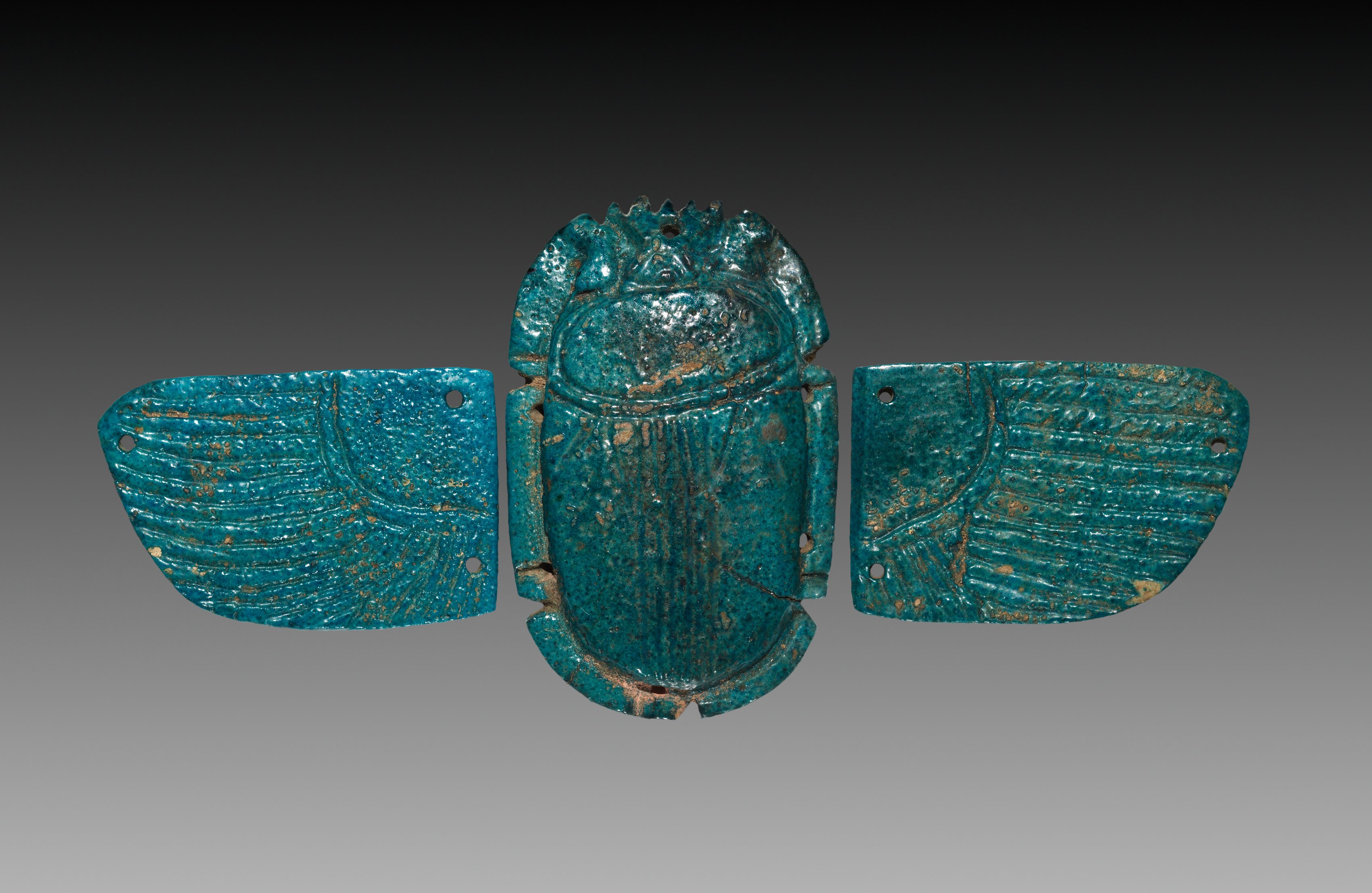The Cleveland Museum of Art
Collection Online as of April 20, 2024

Winged Pectoral Scarab
664–525 BCE
(715–332 BCE)
Overall: 7 cm (2 3/4 in.)
Location: not on view
Description
To create connections between their work and ancient Egypt, European and American jewelers conducted careful research, looking at sources including hieroglyphs in funerary art and architecture. The1924 Cartier scarab brooch was directly inspired by representations of the dung beetle, which also stood for Khepri, a sun deity of resurrection, while the 1927 gateway brooch echoes the silhouette of ancient Egyptian temple entrances. Beauty companies like Bourjois even adopted ancient Egyptian motifs for their marketing and packaging, suggesting the elegance of their brand through sensationalized elements of ancient Egyptian art.- Purchased in Egypt by Lucy Olcott Perkins through Henry W. Kent
- Berman, Lawrence M., and Kenneth J. Bohač. Catalogue of Egyptian Art: The Cleveland Museum of Art. Cleveland, OH: Cleveland Museum of Art, 1999 Reproduced and Mentioned: p. 526
- Egyptomania: Fashion's Conflicted Obsession. The Cleveland Museum of Art, Cleveland, OH (organizer) (April 1, 2023-January 28, 2024).Gifts of the Nile: Ancient Egyptian Faience. The Cleveland Museum of Art, Cleveland, OH (May 10-July 5, 1998); Museum of Art, Rhode Island School of Design, RI (August 25, 1998-January 3, 1999).The Cleveland Museum of Art (5/10/98 - 7/5/98); Museum of Art, Rhode Island School of Design (8/25/98 - 1/3/99). "Gifts of the Nile: Ancient Egyptian Faience," not in exh. cat.
- {{cite web|title=Winged Pectoral Scarab|url=false|author=|year=664–525 BCE|access-date=20 April 2024|publisher=Cleveland Museum of Art}}
Source URL:
https://www.clevelandart.org/art/1914.766